In this tutorial, we’ll show you how to draw and edit polygons in CorelDRAW. Learn how to resize, rotate, and reposition a polygon, how to change the number of sides, and how to reshape a polygon into a star. You’ll also learn how to transform polygons into more complex and interesting shapes by using the Shape tool to edit nodes.
Thanks for watching! We hope you found this tutorial helpful and we would love to hear your feedback in the Comments section at the bottom of the page. You will find a written version of this tutorial below, and a printable PDF copy to download on the Download Resources tab above.
Start your FREE 15-day trial and embark on a design journey with powerful tools for vector illustration, layout, photo editing, typography, and collaboration.
Download these free resources:
Written tutorial (PDF, 309 KB)
CorelDRAW Graphics Suite Resources
Quick Start Guide (PDF, 2 MB)
Keyboard Shortcuts (PDF, 3.5 MB)
CorelDRAW and Corel PHOTO-PAINT user guides
For CorelDRAW Graphics Suite subscription and perpetual licenses (2018 to 2024), languages include English, Português do brasil, 简体中文, 繁體中文, Čeština, Deutsch, Español, Français, Italiano, 日本語, Polski, Русский
What’s New in CorelDRAW Graphics Suite
CorelDRAW Tools
 CorelDRAW Graphics Suite
CorelDRAW Graphics Suite
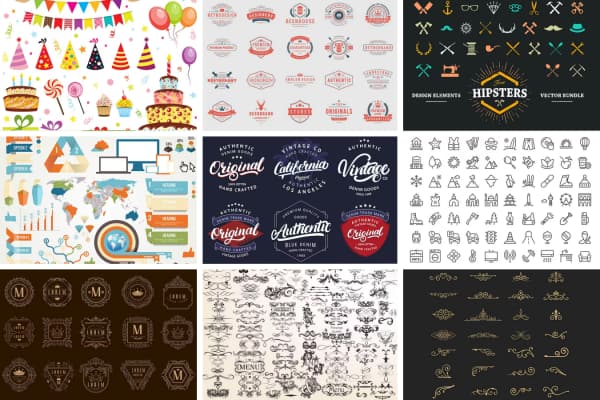 Ultimate Vector Bundle Vol. 1
Ultimate Vector Bundle Vol. 1
 CorelDRAW Standard 2021
CorelDRAW Standard 2021
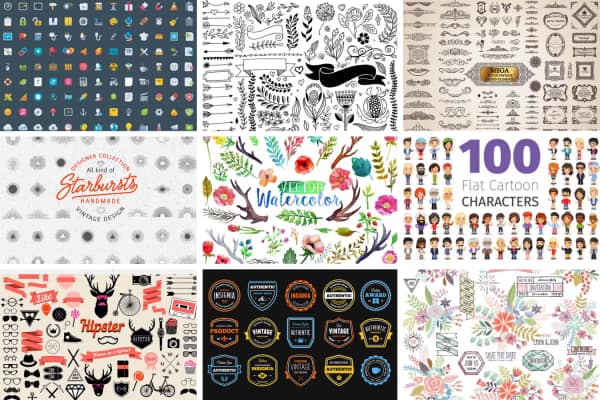 Ultimate Vector Bundle Vol. 2
Ultimate Vector Bundle Vol. 2
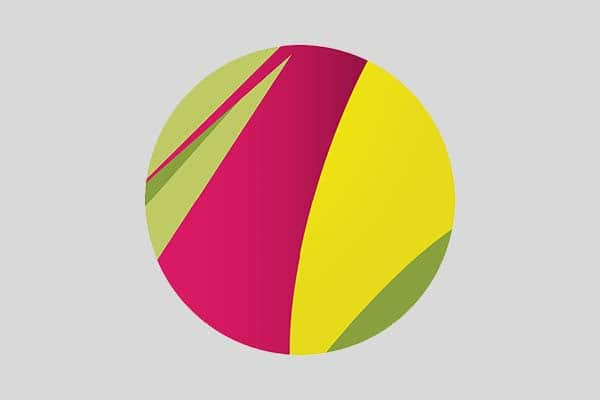 Corel Vector
Corel Vector
How to Use the Polygon Tool in CorelDRAW
In this tutorial, we’ll show you how to draw and edit polygons in CorelDRAW, plus how to transform polygons into complex and interesting shapes.
Click on any of the images below to view full-size.
Polygon Tool Basics
The Polygon tool can be found on the Toolbox, located by default below the Ellipse tools. This tool can also be activated by the Y shortcut.
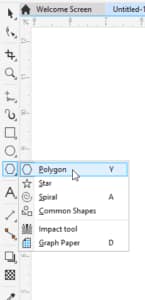
The property bar displays the default outline width and line style for all graphic elements, which can be changed for a polygon once it’s created. You can also set the number of polygon sides.

A polygon is created by clicking and dragging from one corner to the opposite corner of its bounding rectangle. Once created, the polygon has 8 sizing handles all around, and an X at its center.
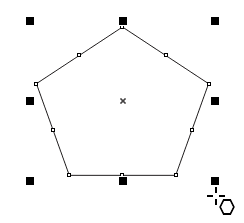
- To draw a polygon from its center, hold the Shift key while dragging the mouse.
- To draw a polygon with equal sides, hold the Ctrl key (Cmd key for Mac users) while dragging the mouse.
- To draw an equal-sided polygon from its center, hold both the Shift key and Ctrl/Cmd key while dragging the mouse.
Corner handles can be dragged to resize while maintaining the aspect ratio, and side handles can stretch or narrow. Clicking and dragging the X moves the polygon, and keeping the Shift key pressed constrains the move to be horizontal or vertical.
When you click on the X, the sizing handles become rotation handles, which can be used to rotate or skew the polygon.
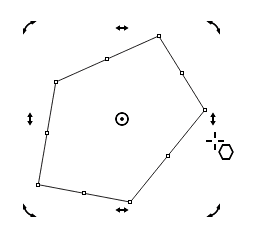
The polygon center is now a circular pivot point, which you can click and drag to a different spot, and now this point is the center of rotation.
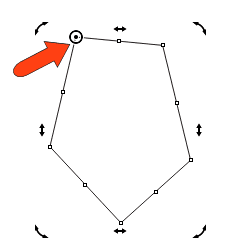
Clicking the pivot point brings back the X and the sizing handles.
As long as a polygon is selected, you can change outline width, line style, left-click a color swatch to add a solid fill, and right-click a color swatch to set the outline color. You can also change the number of sides.
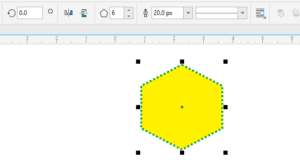
You can use the Object Position fields on the property bar to place the polygon. By default, the X and Y coordinates here define the location of the X at the polygon center. But you can also choose a different reference point, like the lower left corner, and specify that point’s coordinates.

When you use the Object Size fields to specify width and height, the reference point remains in place while other points move accordingly. The same applies for the Scale Factor fields, which reflect the change from the polygon’s original dimensions. If you change either percentage, the reference point stays in place.
You can also enter a rotation angle.

Modifying a Polygon
To make changes to a polygon, you can first select it. You can select any polygon while the Polygon tool or another shape tool is active, or you select it with the Pick tool.
The Shape tool can be used to transform a polygon into a much more complex and interesting shape.
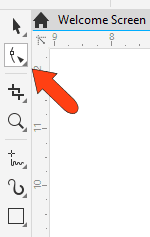
You can activate the Shape tool while a polygon is already selected, or you can select a polygon with the Shape tool. This produces nodes at each corner and at the midpoint of each side.
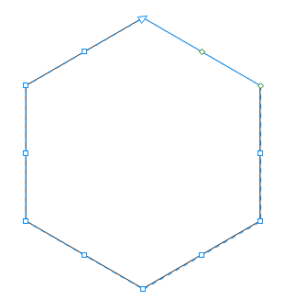
Clicking and dragging any node produces the same shape at every corner or side, resulting in a star shape. With the Ctrl/Cmd key pressed, each node remains the same distance from its adjacent nodes.
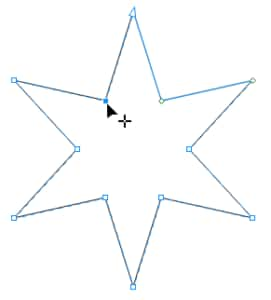
Without the Ctrl/Cmd key pressed, you can drag nodes to twist the shape. You can even drag nodes inward (with or without pressing the Ctrl/Cmd key) to get an overlapping star shape.
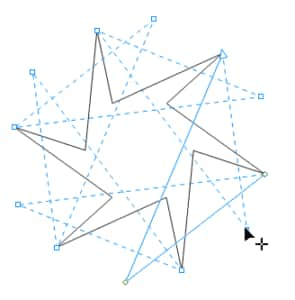
The Shape tool can make polygons even more interesting. You can double-click on an edge to add a node, which adds similar nodes on all edges.
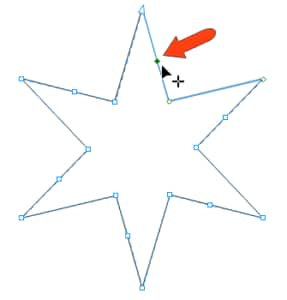
Dragging added nodes can change the polygon even further.
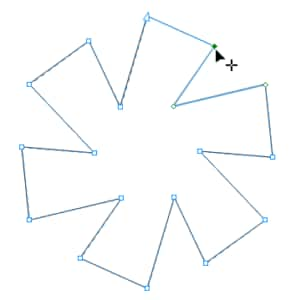
Double-clicking a node removes it, along with the similar nodes on other edges. You can also click a node to select it, then click Convert to Curve on the property bar.
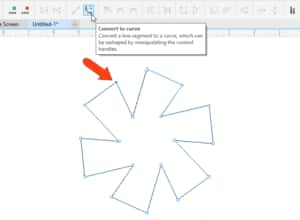
Now you can adjust tangency at both ends of the line segment.
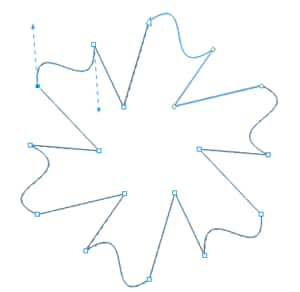
If you want to adjust individual nodes without maintaining even sides and corners, first press the Spacebar to temporarily switch to the Pick tool, which selects the polygon. Then click Convert to Curves on the property bar.
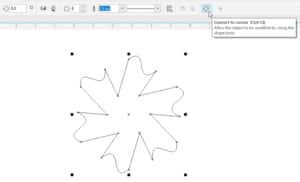
Once converted, you can press the Spacebar to go back to the Shape tool and adjust individual nodes. You can also drag a selection marquee around multiple nodes to move them together.
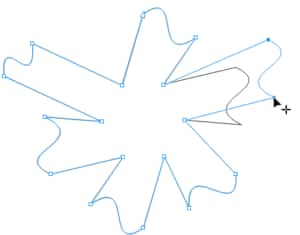
Start your FREE 15-day trial and embark on a design journey with powerful tools for vector illustration, layout, photo editing, typography, and collaboration.


Comments (2)
Reader Interactions
Comments
CAN YOU DO MONUMENT SIZES AND SHAPES ON COREL PHOTO PAINT , SO YOU CAN ETCH ON THE SHAPE OF THE MONUMENT
Hi Tammy,
It would depend on what the size of the monument is. The maximum document size in PHOTO-PAINT is 100×100 inches I believe, so if that is not large enough for the monument you could create the elements in PHOTO-PAINT and then assemble them in a CorelDRAW document which allows for a much larger document size.
Hope this helps,
The Discovery Center team